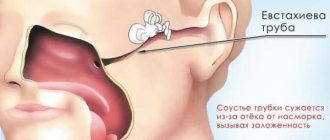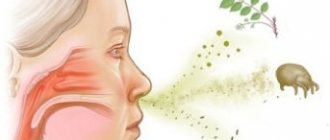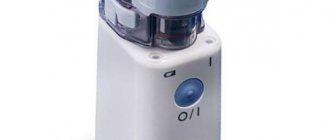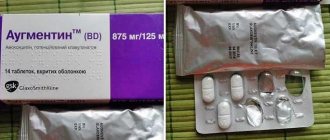People who have had their ears blocked at least once in their lives know how much the quality of hearing decreases and how difficult it is to perceive information coming from outside. Meanwhile, this condition very often develops against the background of untreated sinusitis. Anatomically, the organs of hearing and smell are located very close to each other, so the infection spreads rapidly. We will tell you in our article what to do if your ears are blocked due to sinusitis. But first, let's look at the causes and symptoms of this pathological condition.
What is sinusitis?
This inflammatory disease of one or two maxillary sinuses at the very beginning of the development of the process is usually accompanied by only mild discomfort. The patient only experiences swelling of the mucous membranes of the sinuses and nose. Purulent inflammation does not develop at this stage of the disease. Further, the swelling narrows the passage between the maxillary sinus and the nasal cavity so much that the outflow of secretions is disrupted. As a result, the sinus becomes blocked, which leads to the development of a purulent inflammatory process.
Violation of the outflow of mucus and a change in the color of the secretion is one of the initial symptoms of sinusitis in adults. Treatment of this disease should occur under the supervision of a physician. Otherwise, ignoring the symptoms can lead to serious complications, one of which is ear congestion from the inflamed maxillary sinus.
Consequences: inflammation
Pathogenic organisms entering the auditory tube cause inflammation. Thick mucus begins to be produced, which needs to be drained. If the auditory tube is clogged and is unable to ensure complete drainage of fluid, inflammation of the ear occurs - otitis media.
In addition to the intensity of the inflammatory process, the anatomical features of the structure of the Eustachian tube are of great importance for the development of the disease: the angle at which it connects to the tympanic cavity, the diameter of the canal and its length.
Signs of sinusitis
In the acute form of the inflammatory process occurring in the maxillary sinus, characteristic symptoms are observed. Treatment of sinusitis in adults is prescribed taking into account the following symptoms:
- increase in body temperature to 37.5-39 °C;
- weakening of the sense of smell;
- lethargy, weakness, loss of appetite;
- an increase in pain, which is first localized at the site of inflammation of the sinus, in the frontal, temporal, and occipital regions;
- discharge of pus from the inflamed sinus, especially when tilting the head forward;
- swelling of the soft tissues of the face, their redness at the site of inflammation;
- pain in the teeth, development of the inflammatory process in them.
The doctor can make the correct diagnosis based on x-rays. In the picture, the inflamed sinus will be darkened compared to the healthy one.
With sinusitis, pain can radiate to the ear? What are the common signs of sinusitis?
Answers:
TsKB6 JSC Russian Railways
Ekaterina, when you have sinusitis, your sinuses hurt, and to make it clear to you, the area under the eyes and above the eyebrows causes headaches when bending over. But the ear is a different disease. Are you seeing a doctor?
i run away
Symptoms of sinusitis:
Symptoms of sinusitis can be very diverse and do not always suggest inflammation of the maxillary sinus; signs of sinusitis also depend on the stage and form of the disease.
— Unpleasant sensations appear in the nose and paranasal area, which gradually increase. The pain is less pronounced in the morning and increases in the evening. Gradually, the pain “loses” a certain place and the patient begins to have a headache. If the process is unilateral, then pain is noted on one side. - Difficulty in nasal breathing. The patient has a stuffy nose. The voice takes on a nasal tone. As a rule, both halves of the nose are blocked. Difficulty in nasal breathing is constant or with slight relief. Alternate congestion of the right and left halves of the nose is possible. - Runny nose. In most cases, the patient experiences mucous (transparent) or purulent (yellow, green) discharge from the nose. This symptom may not exist if the nose is very stuffy, since the outflow from the sinus is difficult (this was mentioned above). — Increase in body temperature to 38 and above. As a rule, this symptom is observed in acute sinusitis. In a chronic process, body temperature rarely rises. — Another symptom of sinusitis is malaise. This is expressed by fatigue, weakness, patients refuse food, and their sleep is disturbed.
Shavkat Khasanov
Signs of sinusitis: pain around the nose, sometimes headaches, an unpleasant odor that is felt by the patient himself, nasal discharge, temperature reaction (rarely). An X-ray reveals darkening in the area of the paranasal sinuses due to inflammation. Pain may (rarely) radiate into the ear; such pain occurs with concomitant inflammation of the auditory tube
[link blocked by decision of the project administration]
Why is the ear blocked with sinusitis?
In fact, this is not surprising. The ear, throat and nose are interconnected by one system. That is why when one of these organs becomes ill, the infection very quickly spreads to others. If the ears are blocked due to sinusitis, this means that the patient needs to undergo additional examination. Pain and hearing loss can signal complications and the onset of a pathological process, which often lead to serious consequences.
One of the causes of pain and congestion in the ear due to sinusitis is blockage of the Eustachian tube. In this case, the patient is accompanied by unpleasant sensations and extraneous noise in the ears. If the inflammatory process is not stopped in time, it can lead to otitis media and severe hearing impairment.
Why does it radiate into the ear with sinusitis?
Painful sensations are caused by the specifics of the anatomical structure.
From the auricle, the external auditory canal goes deep, ending in a thin septum - the eardrum. Behind it is the ear cavity. On this side, a system of ossicles connected to the auditory nerve is attached to the eardrum. External sound signals vibrate the eardrum and irritate the nerve that carries information about sounds to the brain.
The vibrations of the tympanic septum depend on the air pressure around it, outside and inside . It should be the same. External (atmospheric) pressure is equalized with internal pressure due to the intake of air from the ear cavity.
The air supply is provided by the auditory (Eustafian) tube.
With sinusitis, the conductive channel becomes clogged with mucus. In this case, bilateral sinusitis is especially dangerous, since problems can arise with both ears at once. Air does not pass into the ear cavity. There is a difference between external and internal pressure. It causes discomfort and pain and radiates into the ear.
Symptoms of ear congestion
In acute purulent sinusitis, discomfort and hearing impairment occur quite often. Often this condition is accompanied by pain and fever up to 38 °C.
You can make sure that your ears are clogged with sinusitis by the following characteristic signs:
- sensation of noise, squeaking, crackling and gurgling in the ear;
- hearing impairment;
- changing the sound of your own voice;
- strong pressure in nasal bone and head.
Since this pathological condition occurs against the background of inflammation of the paranasal sinuses, the patient may also experience headaches, nausea, and dizziness.
If, with sinusitis, there is a disturbance in the outflow of purulent secretion and its flow into neighboring tissues, otitis media or eustachitis develops against the background of the underlying disease. In this case, the symptoms described above are accompanied by severe pain, requiring immediate medical attention.
Stuffed ear due to sinusitis: causes and treatment methods
There is an anatomical connection between the middle ear and the nasopharynx thanks to the Eustachian tube. Therefore, it is not surprising that many diseases that cause inflammatory changes in the upper respiratory canals provoke problems in the hearing organs.
Prolonged runny nose very often leads to otitis media, this is especially true for children. An even more dangerous complication of sinusitis is the accumulation of a large amount of mucus in the paranasal sinuses against the background of severe swelling, which causes a narrowing of the auditory canal. Ear congestion with sinusitis is a dangerous symptomatic manifestation that cannot be ignored.
Drops in the ear for congestion
The basis of therapeutic effects for otitis media is the use of ear drops. The result of taking them comes quickly - after several instillations. However, treatment with such drops must be prescribed by a doctor indicating a specific dosage.
A specialist may recommend instillation of Rizocin, Otipax or Albucid; the drugs Otium and Rivanol are effective. Cipropharm Dex may be prescribed as a medicine with an antimicrobial effect.
How to make a compress for ear congestion due to sinusitis?
If your ear is blocked due to sinusitis, then you need to find out what to do in such a situation. Installing compresses will help. As the main solution, a high concentration of salt composition or a mixture of camphor or chloramphenicol alcohol with water is used.
To install the compress, make a cotton wick and moisten it with the solution. After this, the turunda must be inserted into the ear canal for a third of an hour. In this case, the ear must be insulated by wrapping a woolen scarf around the head or wearing a warm hat.
Exercises for ear congestion
Special swallowing exercises that help equalize the pressure in the ears have an auxiliary effect. By making intense reflex swallowing movements, the patient can cause the plug to be pushed outward through the ear canal.
Ignoring the symptoms of sinusitis or its improper treatment can lead to serious complications, including otitis media.
This pathology is characterized by congestion in the ears. Therefore, you will have to not only treat the root cause that caused inflammation in the maxillary sinuses, but also eliminate the swelling of the mucous membrane in the hearing organs. Treatment should be comprehensive and carried out under the supervision of a doctor.
Source: https://1doctorlor.ru/gajmorit/zalozhilo-uho-pri-gajmorite-prichiny-i-metody-lecheniya.html
If you have sinusitis, your ear is blocked: what to do?
It should be noted that discomfort in the ear can occur not only with inflammation of the maxillary sinuses. Only an otolaryngologist after examining the patient can make the correct diagnosis and select the necessary medications. You should also contact this specialist if your ears are blocked due to sinusitis, but they do not hurt. What can be recommended for this disease?
First, to get rid of ear congestion, you should determine the cause of the discomfort. In some cases, in addition to traditional treatment, additional medications or physical therapy may be needed. Only in this way will it be possible to achieve a positive result.
Secondly, it is strictly forbidden to independently prescribe treatment in the form of warming or rinsing the ear. This can lead to the spread of infection from one organ to another. In some cases, ear congestion can be caused by accumulated mucus or wax plugs. To get rid of this problem, the doctor may recommend, along with drug treatment, performing exercises to help bring intra-ear pressure back to normal.
Possible complications of sinusitis
Inflammation of the maxillary sinuses can cause the following complications:
- Swelling of the retina.
- Inflammatory process in the orbit.
- Vein thrombosis.
- Purulent otitis.
- Inflammation of bone tissue.
- Meningitis.
The acute form of the disease can become chronic if not fully treated. Then periodically worsening sinusitis and headaches with minimal hypothermia will disrupt the usual course of a person’s life. Complications of chronic inflammation of the maxillary sinuses:
- Inflammation of the soft tissues of the face.
- Apnea.
- Tonsillitis, laryngitis, pharyngitis.
- Bronchitis, pneumonia, asthma.
- Sepsis.
- Brain abscess.
Due to the fact that when breathing through the mouth a person cannot receive a normal amount of oxygen, his brain experiences oxygen starvation. As a result, mental abilities decrease, lethargy, irritability, and fatigue appear.
How to treat a stuffy ear?
You can get rid of this unpleasant symptom only after the sinusitis is completely cured. This can last quite a long time, especially if therapy was not carried out in a timely manner and the disease did not become chronic. What to do if your ear is blocked? How to treat sinusitis and with what means?
It is imperative to free the nasal passages from accumulated pus. To do this, first of all, mechanical manipulations are carried out. In the early stages, you can get rid of pus using a soft catheter. If the patient consults a doctor at an advanced stage of the disease, he undergoes piercing of the maxillary sinus with subsequent extraction of purulent contents. Such manipulations are performed in a hospital setting. As a rule, ear congestion goes away immediately after getting rid of sinusitis.
Traditional remedies
If your ears are blocked due to sinusitis, the otolaryngologist will prescribe the following medications:
- Vasoconstrictor nasal drops. They help relieve swelling and achieve significant relief of the patient's condition. It is important that it is not recommended to use them for more than 5 days. As a result, nasal breathing becomes easier and blocked areas in the Eustachian tube open.
- Drops in the ears. Their action is aimed at normalizing the condition of the ear canal, relieving swelling and pain. They may contain an antibiotic (Otofa). Such drops are prescribed when an infection occurs and if regular purulent discharge is observed.
- Antibacterial therapy. It is almost impossible to get rid of diseases such as sinusitis and otitis without taking antibiotics, since their development is directly related to the addition of infection.
Taking any medications without a doctor's prescription is prohibited. First of all, it is necessary to diagnose the patient's condition.
Traditional medicine and physiotherapy
To alleviate the patient’s condition, not only traditional medications can be used, but also physiotherapy and folk remedies. However, their use must be agreed with your doctor. Self-medication in this case can only do harm.
At home, you can recommend inhalations through the nose, which promote better mucus removal and easier breathing. Alcohol compresses and heating for ear congestion can only be effective if the doctor has ruled out otitis media being associated with sinusitis. In the latter case, this can lead to further spread of infection throughout the body.
What to do if your ear is blocked due to sinusitis: causes, provoking factors, treatment
Any person who has suffered from sinusitis at least once can say with confidence that this disease is characterized by severe discomfort, poor health, and malaise. Treatment of sinusitis cannot be carried out strictly at home, since the disease spreads quickly, affecting the ears, eyes, and head.
What is sinusitis
Sinusitis is a type of disease in which an inflammatory process occurs in the mucous membrane of the maxillary sinus. Inflammation occurs when the normal outflow of mucous secretions is disrupted.
Due to the stagnation of the secreted secretion, an ideal environment is created for the development of pathogenic bacteria, which become a kind of basis for the appearance of a focus of inflammation.
At a time when the process has already started, the body begins to experience some difficulties in fighting the infection. Thus, a person discovers a list of symptoms that significantly worsen the quality of life and do not allow the disease to be ignored.
Learn more about the symptoms of sinusitis in our video:
Characteristic symptoms of the disease
Sinusitis has quite a wide range of symptoms. However, the main symptoms that allow you to accurately determine the presence of the disease are:
Signs of sinusitis
Causes of ear congestion
There is nothing surprising in the fact that with sinusitis the ears can become blocked. The thing is that the nasopharynx is very closely connected with the ear system. The ears have a specific structure, which makes them directly dependent on the health of the throat and nose.
Disease of one organ of the system significantly increases the risk that the infection will migrate. Ear congestion often appears at the same time as sinusitis or immediately after recovery. This indicates that the infection has spread. Quite often during this period, in addition to congestion, the patient clearly exhibits fever, dizziness, and difficulty breathing.
If you notice ear congestion, you should immediately visit a doctor. If this is not done, then within a short time the patient will develop otitis media. In such cases, severe pain is often observed, localized in the area of the sore ear and purulent discharge.
How should a stuffy ear be treated with sinusitis? First, you need to visit your doctor if this problem caught you just during the period of treatment for sinusitis. The doctor will recommend what measures need to be taken to make the symptom subside. If the symptom stage is not advanced, then a few simple measures will be enough.
Most often they are as follows:
- Treat sinusitis correctly and perform all procedures hygienically to avoid migration of infection;
- It is necessary to improve your diet - enrich it with foods rich in vitamins and minerals;
- Take immunostimulants prescribed by the doctor;
- Do not allow mucus to get on the mucous membrane of the tube. You can do this if you forbid yourself to blow your nose frequently and intensely. It is better to do special washing with solutions.
What to do?
To eliminate ear congestion, you need to know exactly the cause of its occurrence. In some cases, separate medication and physical therapy cannot be ruled out.
You cannot prescribe treatment for yourself and rinse your ear, as this can provoke an even greater spread of infection throughout the body.
Oddly enough, in the absence of otitis media and other ear ailments, congestion can be caused by accumulated mucus in the nose. In order to get rid of it, you should properly evacuate mucus from the nose.
The main thing here is regularity and consistency. To cleanse, you need to carefully blow your nose, alternately releasing one or the other nostril. You should not blow your nose sharply and forcefully, as there is a risk of damage to the auditory system as a whole.
Most often, after a consultation, the doctor recommends using special drops and exercises that allow you to regulate intra-ear pressure and bring it back to normal.
Drops
Drops are a universal way to relieve congestion if it is not caused by a specific disease.
Vasoconstrictor drops can achieve significant relief and relieve swelling. However, it should be noted that no product (drops) should be used for more than 5 days.
Drops are selected by the doctor on a purely individual basis. It must be remembered that nasal congestion is the main symptom that may indicate the presence of sinusitis in a person.
Thus, the doctor always prescribes drops to the patient that are suitable for instillation into both the ear and nose.
The most common and optimal treatment options are the following drug names:
- Otipax, Anuaran - drops that normalize the condition of the ear canal, relieve swelling and relieve pain. This effect can be achieved by the painkiller contained in the composition.
- Otofa is a special medicinal drop containing the antibiotic rifamycin. They are necessary if, in addition to congestion in the ear, there is an infection that provokes the regular appearance of purulent discharge.
If nothing helps get rid of congestion, then in addition to drops, the doctor may prescribe treatment that will be focused on completely getting rid of all possible causes.
So, to detect the cause of congestion, a full examination will be necessary. Based on this, a treatment plan is built. It often includes antibiotic therapy and blowing out the ear canal. In the future, the patient may be separately prescribed nasal lavage to remove residual pus.
How to quickly cure sinusitis, watch our video:
Physiotherapy and folk remedies
First of all, the patient needs to eliminate the cause that affects the normal functioning of the hearing organs. To alleviate the condition, not only medications can be used, but also physiotherapeutic methods, as well as folk remedies.
The following procedures can also show good results:
- Alcohol compresses;
- Inhalations;
- Warming that improves the waste of secretions.
As for traditional methods of treatment, it must be remembered that they should be auxiliary, but not primary. With the permission of the doctor, he can use harmless means that will have a general strengthening and anti-inflammatory effect. It is not advisable to use little-known drugs or substances that you have not made yourself.
So, without fear you can use:
- Geranium juice;
- Birch buds;
- Chamomile;
- St. John's wort.
To produce natural treatments, you should use only proven and fresh ingredients.
Possible complications
If sinusitis is not treated promptly or incorrectly, serious and even global complications can occur. Quite often, slow treatment leads to the following results:
The above diseases may appear due to an incorrect diagnosis, which led to a worsening of the inflammatory process and progression of the disease.
Thus, in order to quickly and successfully overcome the disease, you need the help of a truly knowledgeable and qualified doctor. It is worth remembering that sinusitis can occur not only in acute, but also in sluggish form.
Timely detection of the problem will save your health and even your life. Inflammation in sinusitis is located in close proximity to the brain, which doubles the risk if left untreated.
What to do if your ear is blocked:
Forecasts
Correct diagnosis, high professional qualifications of the doctor and adherence to the correct treatment regimen provide all the necessary chances that the disease will recede quickly enough.
In the treatment of sinusitis and ear congestion, the main thing is not only efficiency, but also the quality of all medical procedures performed.
People who are prone to constant colds need to be attentive, first of all, to their nose and nasopharynx as a whole. Quite often, even a typical cold can lead to unexpected changes in illness.
Source: https://gidmed.com/otorinolarintologija/simptomu/zalozhennye-ushi-pri-gajmorite.html
Possible complications
Any patient is interested in the question of whether the ear is blocked due to sinusitis, when this condition will go away. The duration of treatment largely depends on the stage of the disease at which the patient consulted a doctor. As a rule, nasal congestion goes away immediately after you manage to get rid of sinusitis. At the same time, if treatment was started untimely, complications in the form of acute and chronic otitis may develop.
During therapy, it is important to eliminate all factors that provoke disruption of the ear apparatus. If, after treatment, congestion persists, additional examinations of the hearing organ will be needed. In some cases, the patient undergoes ear blowing, which improves the functioning of the Eustachian tube and normalizes all functions of the ear apparatus.











